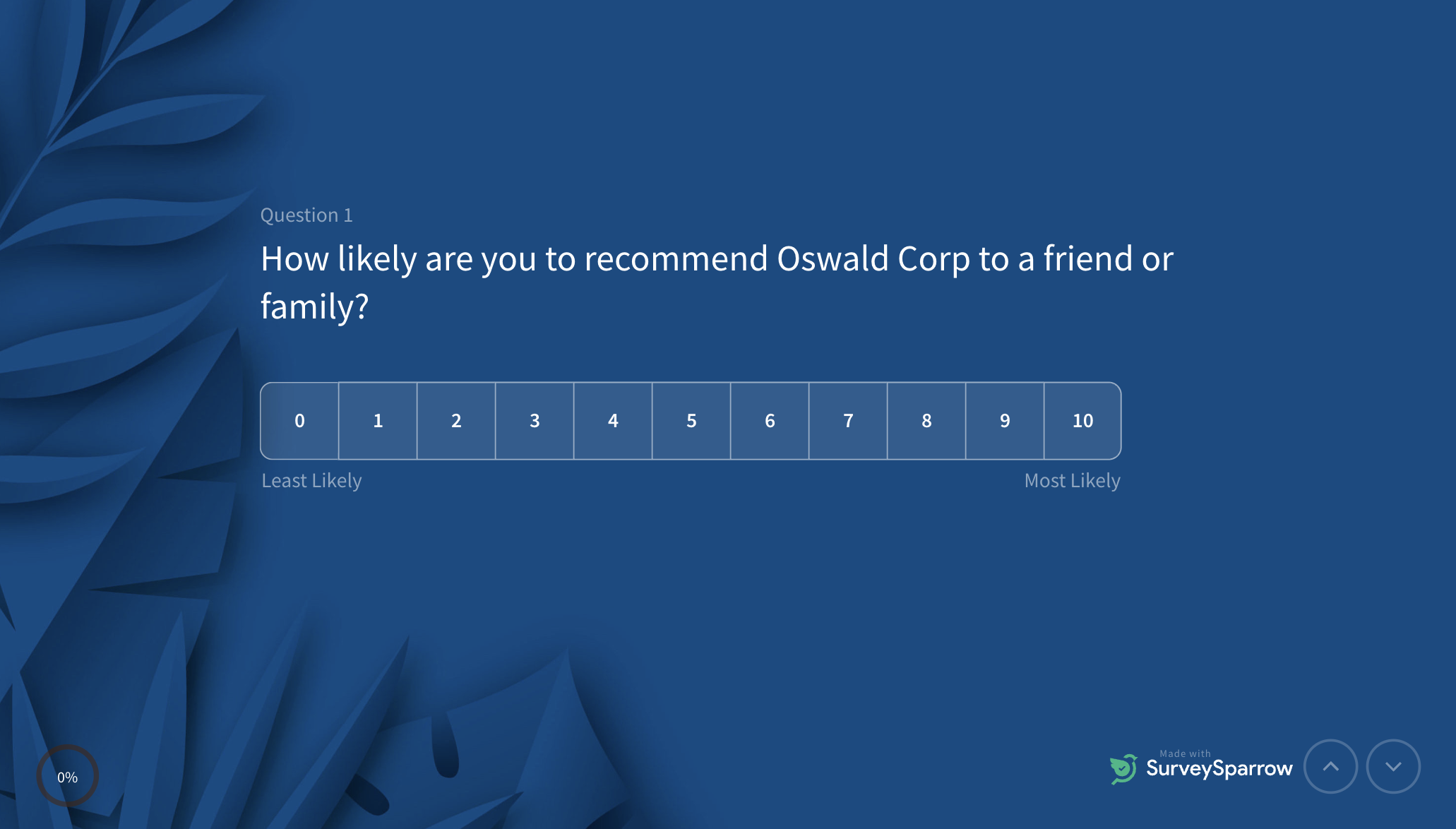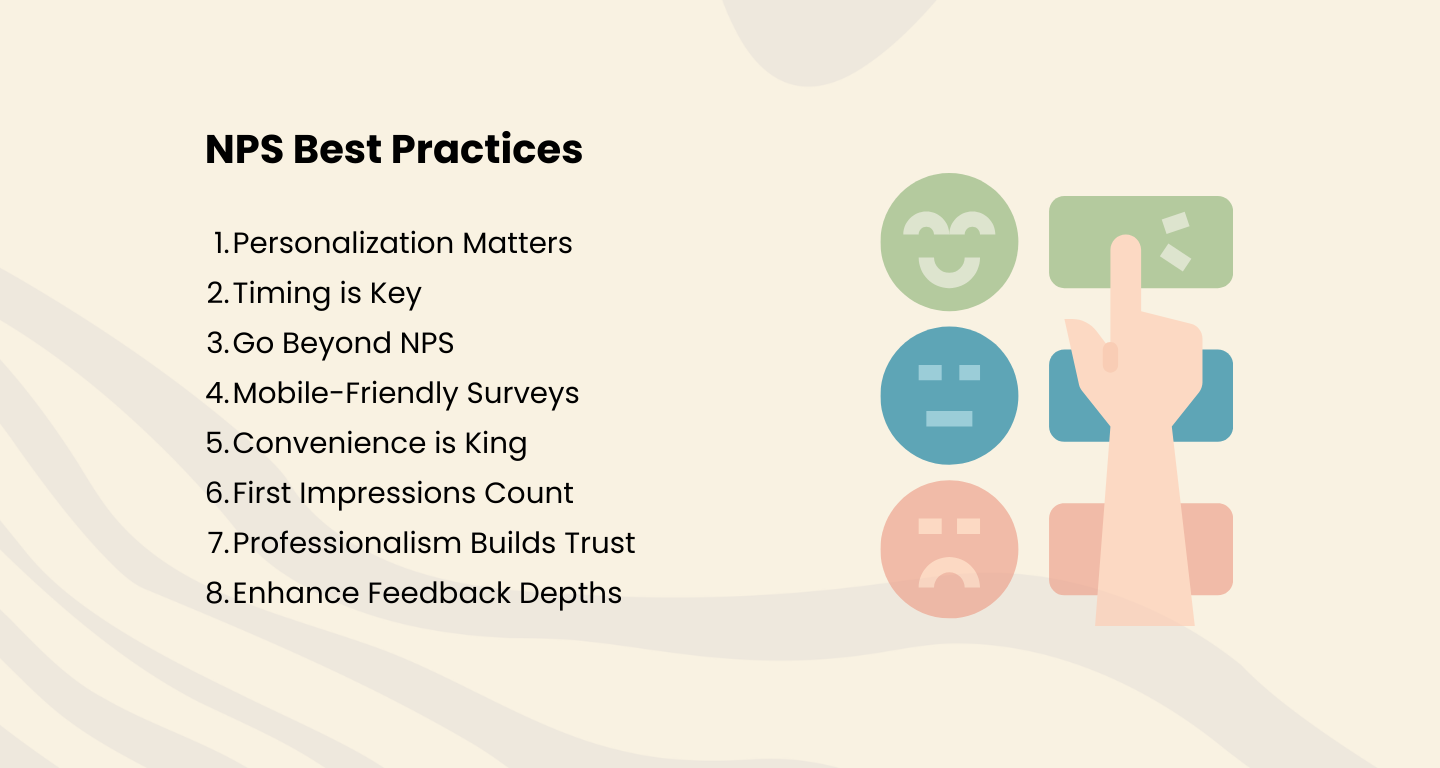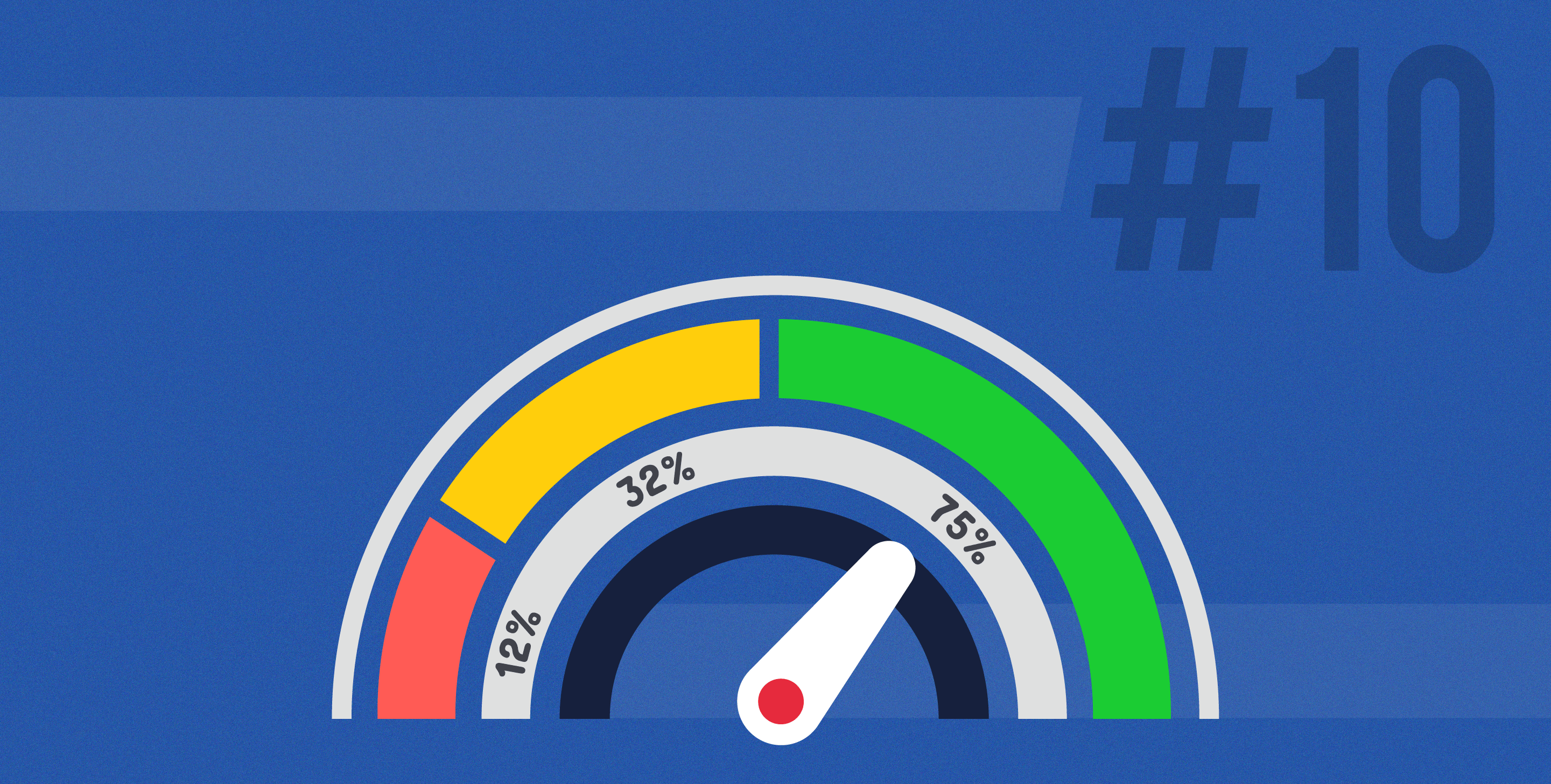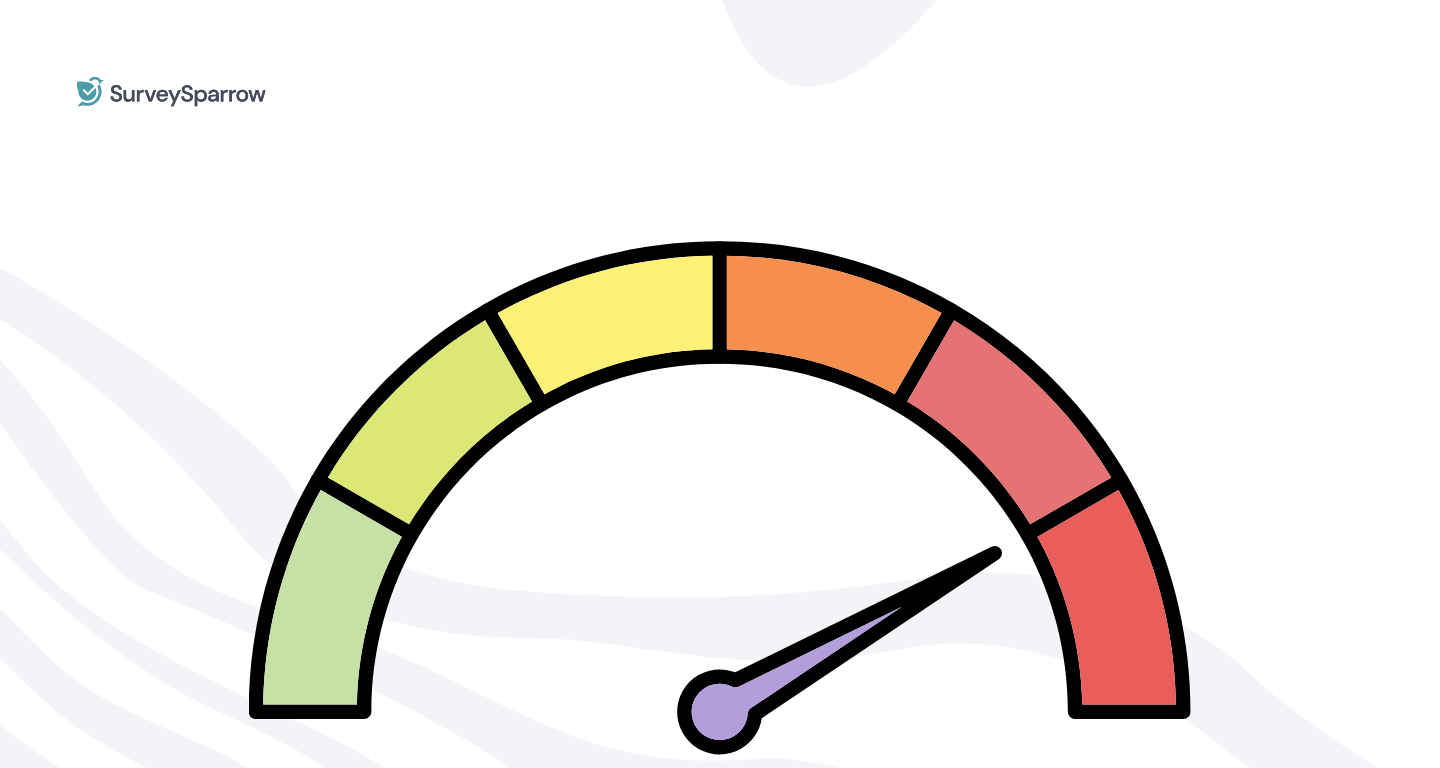NPS
What Is NPS Data And How To Look At It ?
Article written by Kate Williams
Product Marketing Manager at SurveySparrow
11 min read
19 September 2025

In this day and age of disruptive e-commerce models, it is always word-of-mouth marketing that majorly drives consumer engagement and sales.
One of the best ways to understand the impact of consumer experience on brand growth is to analyze the Net Promoter Score (NPS). In layman terms, NPS is ‘the consumer’s likelihood to recommend and promote your brand to others based on their experience’. It is one of the most compelling metrics that define the customer’s loyalty towards your brand. If you are wondering how to look at NPS data to gauge and improve your brand growth, you’re exactly at the right place. Let’s find out right now.
What is NPS?
Net Promoter Score (NPS), developed by Frederick F. Reichheld, is a performance metric that measures the customer’s overall satisfaction with a company’s product/service and the willingness to recommend it to others. It is the most adaptable, powerful, yet highly underrated metric since NPS is all about the customer.
NPS is omnipresent in many industries and functional areas such as marketing, customer service, and customer experience management. As simple as NPS may sound, it is actually the context in which we use the metric and the type of product/service we consider that matters more. Net Promoter Score questions, combined with several other metrics and scores, measures customer service levels.
It looks something like this..

Plus, you can create your own surveys with the NPS Software by SurveySparrow. It is so easy to use! The intuitive platform makes it easy to create, distribute and analyze NPS surveys. Not enough? Well, there’s more. You can add dynamic lists and segments, conduct sentiment analysis and automate the surveys based on your preferences.
Give it a spin today!
14-day free trial • Cancel Anytime • No Credit Card Required • No Strings Attached
Now, how should your company utilize the NPS metric?
How is the Net Promoter Score Calculated?
You can calculate the Net Promoter Score based on the customers’ ratings to the question “How likely are you to recommend our service/brand/product to your family/friends/others on a scale of 1 to 10?”. Here, ‘1’ equates to ‘least likely’, and ‘10’ equates to ‘most likely’.

A lower NPS in the NPS chart is an indicator of potential customer loyalty and satisfaction issues. On the other hand, a higher NPS is an indicator of healthier business performance.
Before we go ahead, it is important that we know the answer to a crucial question. What’s that?
What is a good NPS?
The answer to what can be called a “good” score can vary by industry and region. It typically falls between 0-30. Net promoter scores are categorized into three distinct sections:
Promoters (Score:9-10): These are highly satisfied customers who are likely to recommend your products and services to others. They are your most loyal audience or, to put it in other words, who can be considered your brand’s advocates.
Passives (Score: 7-8): These customers are satisfied with your brand but they are not enthusiastic enough to promote. Again, they might be less likely to promote your brand but it is highly unlikely that they’ll switch to a competitor.
Detractors (Score: 0-6): Okay, these are the customers that hold the power to tarnish your brand image. They might consider to switch to a competitor any chance they get. So, beware. They are dissatisfied with your product or service that they might even share negative feedback.
When it comes to calculating the NPS score, you know the drill right? The formula is pretty straightforward. Subtract the percentage of detractors from the percentage of promoters.
NPS= (% of Promoters) – (% of Detractors)
So, let’s say you have 70% promoters and 10% detractors. Your NPS would be +60 (70% – 10% = 60). It’s as simple as that!
What to Do Once The NPS is Calculated?
After NPS calculation, employees can use the NPS scores to identify the potential gaps and improve the existing products/services for the best customer experience statistics in the long term. This, in turn, will increase the revenues and profits for the company.
But what’s a good NPS benchmark after all? There are two possibilities:
If your current NPS is better than your previous NPS (Absolute Method).
If your current NPS is better than your competitors in the same industry (Relative Method).
However, the Net Promoter Score itself seems a little meaningless at times. We need to view it more as a qualitative metric than a quantitative metric. More over, there are variations in the NPS calculations based on the various stages of the customer experience life cycle (Bain & Company):
Relationship
Competitive Benchmark
Experience
Different Ways to Visualize Your NPS Data
There are many different ways to visualize NPS, depending upon what elements you want to lay emphasis on. At times, it’s best to go for a net promoter score chart to summarize the extracted data. Visualizing NPS scores through graphs are significant as different distributions of respondent segments can lead up to the same score. Hence, the visualization technique is used to get a more holistic view of your customer’s loyalty and advocacy.
Let’s check out the most common net promoter score charts:
- Single Value Chart
- Stacked Bar Chart
- 100% Stacked Bar Plus Line Chart
Structuring NPS Programs
NPS surveys are relatively easy to create, but you must give a serious thought on how you want to administer it. A well-structured NPS survey goes a long way in getting the right results for your business. You can use an ideal NPS software or a modern CEM platform to design the survey questions to get a more comprehensive perspective on your customers, be it the current or potential ones. Examples can be to identify the communication channel that your customer uses, his personal details, etc. Once this is done, you can use different reporting tools to analyze the data for underlying issues and strategic trends.
You can create more promoters for your business by kick-starting specific types of net promoter score questions and programs. The two most popular types are Transactional NPS Surveys & Relational NPS Surveys. You can use a combination of both to understand your customers at a micro as well as at a macro level.
Do keep in mind that the NPS software you choose must be compatible with reporting tools such as BI and SQL. The main reason behind this being it will allow you to combine your NPS data with other customer data thus assisting you in NPS calculation.
The Ideal Time Frame of Sending an NPS Survey to the Customer
The frequency of the NPS survey varies according to the business model:
- First Survey – send a NPS question within the first 1 month after your customer’s first interaction with the company.
- Second Survey & Third Survey – between 3-6 months after the first survey.
- If the company updates its products/services regularly – More Often
- If the company does not update its products/services regularly – Less Often
What Can Cross-Referencing Your NPS Scores With Other Variables Give You?
You can review four kinds of data that are collected through your NPS survey:
- Overall Customer Response Rate (More engaged brands get higher customer response rate)
- Individual NPS Ratings (Range -> 1 to 10)
- Overall NPS Rating (% of Promoters – % of Detractors, Range -> -100 to 100)
- Additional Follow-Up Questions after the main Survey is over
Cross-Reference NPS Data with Other Related Key KPIs
NPS scores have great value, but they become even more significant when seen in connection with other key KPIs. Cross-referencing variables can unravel hidden linkages and explanations to questions that can’t be answered directly.
Let’s dive into some of these variables briefly.
- Product Usage Analytics: It helps you identify the customer’s product usage patterns, which in turn, can help boost customer engagement.
- RFM Model: It helps you focus on the type of customers you need to give more attention to. For example, a long-term customer who recently gave a bad individual NPS rating needs to be re-engaged so that you don’t lose them.
- CSAT: It measures the level of customer experience and customer satisfaction on a short-term basis through a combination of survey questions.
- CES: It measures the customers’ efforts with respect to their interaction with the company’s products/services/support. It can directly affect both CSAT (Service Usability) and NPS (Product Design).
- Marketing Segments: It helps you identify trends within the customer segments and devise appropriate strategies to convert them into promoters or evangelists for your company. Segmentation can be done on the basis of age, location, customer type, etc.
NPS Best Practices
To achieve exceptional results for your business, it is critical to adopt some best practices when you design the whole NPS question process and survey. Let’s list down some of the best practices first:

Add an element of personalization to your NPS survey by making it more friendly and inviting. This will increase the odds of your customers filling out the survey, and entice them to provide honest feedback. Mention your customer’s name within the first sentence itself.
Send your surveys out to your customers in real-time so that they feel more inclined to fill it out immediately. It reduces the risk of them expressing negative sentiments and ensures the most authentic feedback. You can also automate the survey distribution process and time by using CEM software.
Ask more probing questions along with the standard NPS questions to get more granular insights on specific business issues. It helps you dig deep into the ‘Why’ behind every customer rating at the grass-root level and use them to improve your product/service.
Make the NPS surveys mobile-friendly and simple. This helps ensure that the customers do not feel overwhelmed while looking at it and positively fill out the survey. It should have a very intuitive and visually compatible design.
Deliver the survey link to the customer at a time that is convenient for them. You can do this by sending them SMS invites (a built-in feature in some survey software).
Achieve a great first impression by making your emails crisp and short. It is extremely important as it determines whether your customer opens up the email to read it or completely ignores it.
Be trustworthy and professional in your approach. This ensures that your customers find your NPS survey authentic and genuine. Do add your company’s logo and address to make it look legit and valid. In addition, please do not overload your customers with multiple survey requests, lest it will question your professionalism.
Add follow-up questions to your NPS survey so that the customer can give you detailed and open-ended feedback. Some of the options you can use include- ‘Just curious! Why did you give us this score?’ Or ‘Awesome, please tell us the reason for this rating?’
Wrapping up..
We assume that by now, you must have got a fairly good idea about what NPS is all about and how to look at your NPS data.
To summarise, NPS calculation certainly has proven its worth, given the fact that big companies are using it on a continuous basis to track its customers, maintain strong customer relationships, and keep them satisfied. An NPS software is highly functional when combined with other key metrics and easily interpretable by anyone.
Last but not least, NPS scores help organizations to identify and assess the stage it is at in the entire business growth process. Based on this, they can devise and implement actions to boost the NPS. Remember that your main goal is to always listen to your customers’ voice and act on it.
So, perform your Net Promoter Score calculation today and look into the score insights to produce long-term customer success and achieve high business growth.
14-day free trial • Cancel Anytime • No Credit Card Required • No Strings Attached

Get up to 40% more NPS responses and finally understand what drives loyalty.
Kate Williams
Excels in empowering visionary companies through storytelling and strategic go-to-market planning. With extensive experience in product marketing and customer experience management, she is an accomplished author, podcast host, and mentor, sharing her expertise across diverse platforms and audiences.
Related Articles

NPS
9 Reasons Why Using NPS Is Crucial For Your Business
13 MINUTES
18 April 2020

NPS
11 NPS Best Practices to Follow in 2025
17 MINUTES
24 January 2020

NPS
How to Calculate NPS in Excel: A Quick & Easy Guide
6 MINUTES
31 December 2019

NPS
Transactional Net Promoter Score for Targeted Insights
9 MINUTES
26 December 2023

